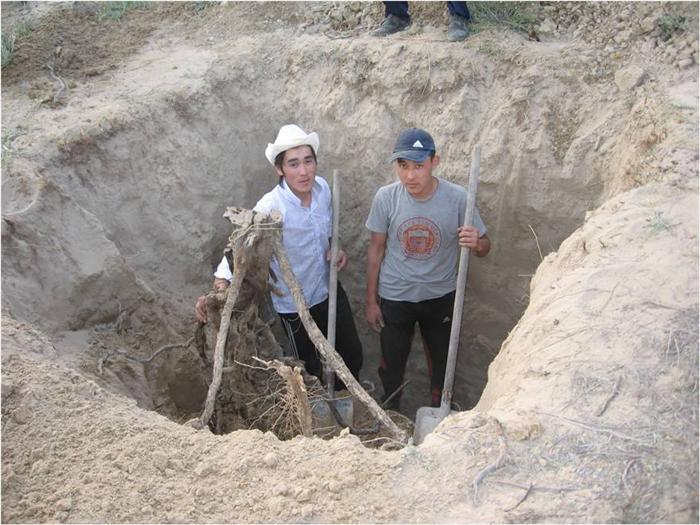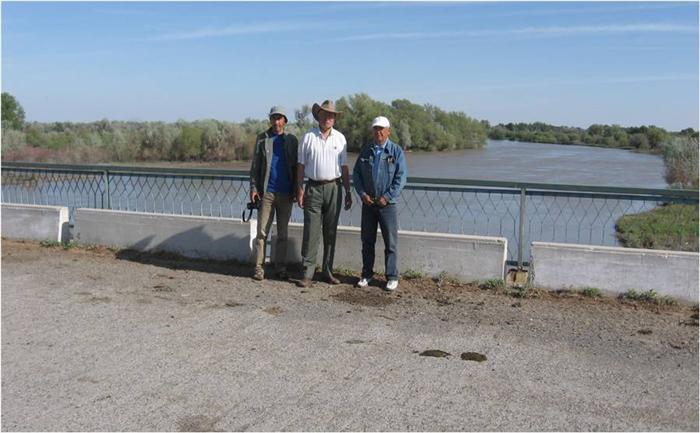International Projects
The international scientific cooperation of chair extends from year to year. So, teachers of chair actively cooperate with colleagues of higher education institutions, scientific research institute and scientific organizations of the near and far abroad:
- Rossiiysky federation: The All-Russian institute of N. I. Vavilov, the Russian State Academy of Agriculture Institute of physiology of plants of K.A. Timiryazev, cytology and genetics (Novosibirsk) Institute, St. Petersburg State University, Tomsk State University.
- Germany: Institut fuer Botanik, Uni-Karlsruhe, Karlsruhe, Greyfsvaldsky university (Greyfsvald);
- People's Republic of China: Sinzyansky State University (Urumqi),
- Great Britain: Midllseksky university
Opportunities for improvement of professional qualification of teachers of chair extended. In 2012-2013g.g. the number of foreign training increased. Professor T.M.Shalakhmetova passed scientific training in UCL, (Great Britain), professor Mukhitdinov N. M., professor Esimsiitova Z.B. - Concorde academy (France). Institute of botany and landscape ecology and TREASURY of al-Farabi about cooperation within the "Central Asian Network of Biological Diversity" program (CABNET).
Together with it much attention is paid to the academic mobility of students, undergraduates and doctoral candidates of Ph.D. specializing on chair a biodiversity and bioresources. In 2011-2012 academic year, the international summer school (workshop) on a subject "Flora and dynamics of vegetation of the Ile-Balkhashsky region was for the first time carried out. Biodiversity preservation in Central Asia" on May 20-28, 2013 in Alma-Ata on the basis of chair of a biodiversity and bioresources. This summer school is organized by the Kazakh national university of a name of al-Farabi, together with Central Asian Biodiversity Network (CABNET) - the Central Asian network on biological diversity, with assistance of University of a name of Ernst Moritz Arndt (Greifswald, Germany), Fund of Conservation of Michael Sukkow (Germany).
«Climate relevance of saxaul and C-accumulation potential of temperate desert in Central Asia»
Participants of project
Germany - Michael Sukkova Fund for Nature Conservation, University of Greifswald (project coordination)
Kazakhstan - Department of Ecology and Botany, Al-Farabi Kazakh National University, Almaty
Turkmenistan - Institute of Deserts, Flora and Fauna, Ashkhabad
Uzbekistan - Republican Centre of landscape gardening and forestry, Tashkent
Project finance
Federal Ministry of Environment, Nature Conservation and Nuclear Safety (BMU)
The project
Types of Haloxylon (Haloxylon aphyllum and Haloxylon persicum, Chenopodiaceae) and Calligonum are the dominant tree and shrub races in temperate deserts of Central Asia. The total area of saxaul plantations in Kazakhstan, Uzbekistan and Turkmenistan is about 450.000 km ². Large areas of plantations saxaul suggest significant potential for carbon sequestration in the form of accumulation of above-ground and under-ground biomass. Deforestation and overgrazing leads to degradation of saxaul plantations and consequently to reduce the biomass and the potential for carbon sequestration. The evaluation of this potential and develop appropriate recommendations to enhance this capacity is the main objective of the project.
Start project in Kazakhstan
In May 2010 it carried out the field research of saksaul vegetation and biomass account in the Ili-Balkhash region. Working group consisting of - Dr. Vuherer (Michael Sukkova Fund for Nature Conservation, University of Greifswald), professor Mukhitdinov N.M. and professor. Shimshikov B.E. with students (Department of Ecology and Botany, University of Al-Farabi) inspected plantations of black and white Saksala Bakanasskoy in the delta and the desert Sary Esik-Atyrau, and also held a record of above-ground and under-ground biomass of both species Haloxylon in different habitats.











